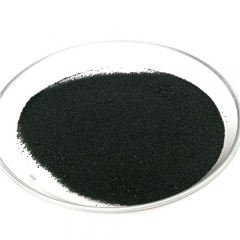Professional industry ceramic supplier, silicon nitride, silicon carbide, aluminum nitride and any other kinds of ceramics.
Overview of Molybdenum Disilicide
Molybdenum disilicide is a silicon compound of molybdenum, also known as molybdenum silicide. Since the radii of the two atoms are not much different, the electronegativity is relatively close, and they have similar properties to metals and ceramics. The melting point is as high as 2030°C, and it is conductive. At high temperatures, a passivation layer can form silicon dioxide on the surface to prevent further oxidation. The appearance is gray metallic, which is derived from its tetragonal α-type crystal structure, and there are also hexagonal but unstable β-type modified crystals. Structure, insoluble in most acids, but soluble in nitric acid and hydrofluoric acid.

What are the factors that affect the service life of molybdenum disilicide heating elements?
1. Firing the product. For example, the service life of fired special glass is different from the glass used in the reflective material industry and the magnetic material industry. The magnetic material industry has the longest available time and special glass has the least.
2. Product quality. The production of raw materials and the manufacturing process determine the quality of the product.
3. The quality of the stove. A good quality furnace can increase the service life of the components.
4. Surface problems. Long-term use at a temperature of 1800℃ will cause problems such as surface agglomeration and blistering, which will destroy the protective effect of the SiO2 oxide film on the surface of the silicon molybdenum rod, thereby reducing the service life.
5. Dimensional tolerance. The accuracy of the hot end size will directly affect the precise temperature control of the electric furnace. When the diameter has a tolerance, the cross-sectional area and impedance value will also change, and the heating of the heating element will also change accordingly. This also means that the uniformity of heating in the electric furnace or the service life of the heating element will be greatly affected.
6. Furnace operator. Excessive power or overheating will damage the heating element products.
7. Product contamination. The product or atmosphere reacts with the protective glaze, causing deterioration of the component.
8. Insulation problems. The insulating layer is too tight, the insulating layer is displaced and damaged, or the insulator is exposed to overheating.
9. Mechanical force. Thermal fractures will soften and may deform, depending on the orientation of their placement in the furnace.
Molybdenum disilicide application
Molybdenum disilicide is used in high-temperature anti-oxidation coating materials, electric heating elements, integrated electrode membranes, structural materials, composite material reinforcements, wear-resistant materials, and structural ceramic connecting materials. :
1) Energy and chemical industry: electric heating elements, high temperature heat exchangers of atomic reactor devices, gas burners, high temperature thermocouples and their protection tubes, smelting vessels and crucibles (used for smelting sodium, lithium, lead, bismuth, tin and other metals).
2) Microelectronics industry: MoSi2 and other refractory metal silicides Ti5Si3, WSi2, TaSi2, etc. are important candidates for large-scale integrated circuit gates and interconnect films.
3) Aerospace industry: As a high-temperature anti-oxidation coating material, it has been extensively and deeply researched and applied. Especially as materials for turbine engine components, such as blades, impellers, combustion chambers, nozzles and sealing devices.
4) Automotive industry: automotive turbocharger rotors, valve bodies, spark plugs and engine parts
Molybdenum disilicide can also be used for heating elements of ceramic heaters. Even at a high temperature of 1700°C, it can maintain good oxidation resistance by forming a protective film on the surface. Molybdenum silicide is used as a structural material and high-temperature filter for high-temperature parts of aerospace and automotive gas turbines, gas combustion nozzles
Molybdenum disilicide price
The price of molybdenum disilicide varies randomly with factors such as production costs, transportation costs, international conditions, exchange rates, and supply and demand in the molybdenum disilicide market. Tanki New Materials Co., Ltd. aims to help various industries and chemical wholesalers find high-quality, low-cost nanomaterials and chemicals by providing a full set of customized services. If you are looking for molybdenum disilicide materials, please feel free to contact to get the latest price of molybdenum disilicide.
Suppliers of Molybdenum Disilicide
As a global supplier of molybdenum disilicide, Tanki New Materials Co., Ltd. has extensive experience in the performance, application and cost-effective manufacturing of advanced and engineered materials. The company has successfully developed a series of powder materials (titanium silicide, tantalum silicide, zirconium silicide, etc.). High-purity targets, functional ceramics and structural devices, and provide OEM services.
Technical Parameter of Molybdenum Silicide MoSi2 Powder
| Product Name | MF | Purity | Particle Size | Melting Point | Density | Color |
| molybdenum silicide | MoSi2 | 99% | 5-10um | 2030℃ | 6.24g/cm3 | dark gray |
Chemical Composition of Molybdenum Silicide MoSi2 Powder
| MoSi2 | Mo | Si | C | S | Fe | S | Ni |
| >99% | >60% | balance | 0.2% | 0.02% | 0.19% | 0.015% | 0.05% |
